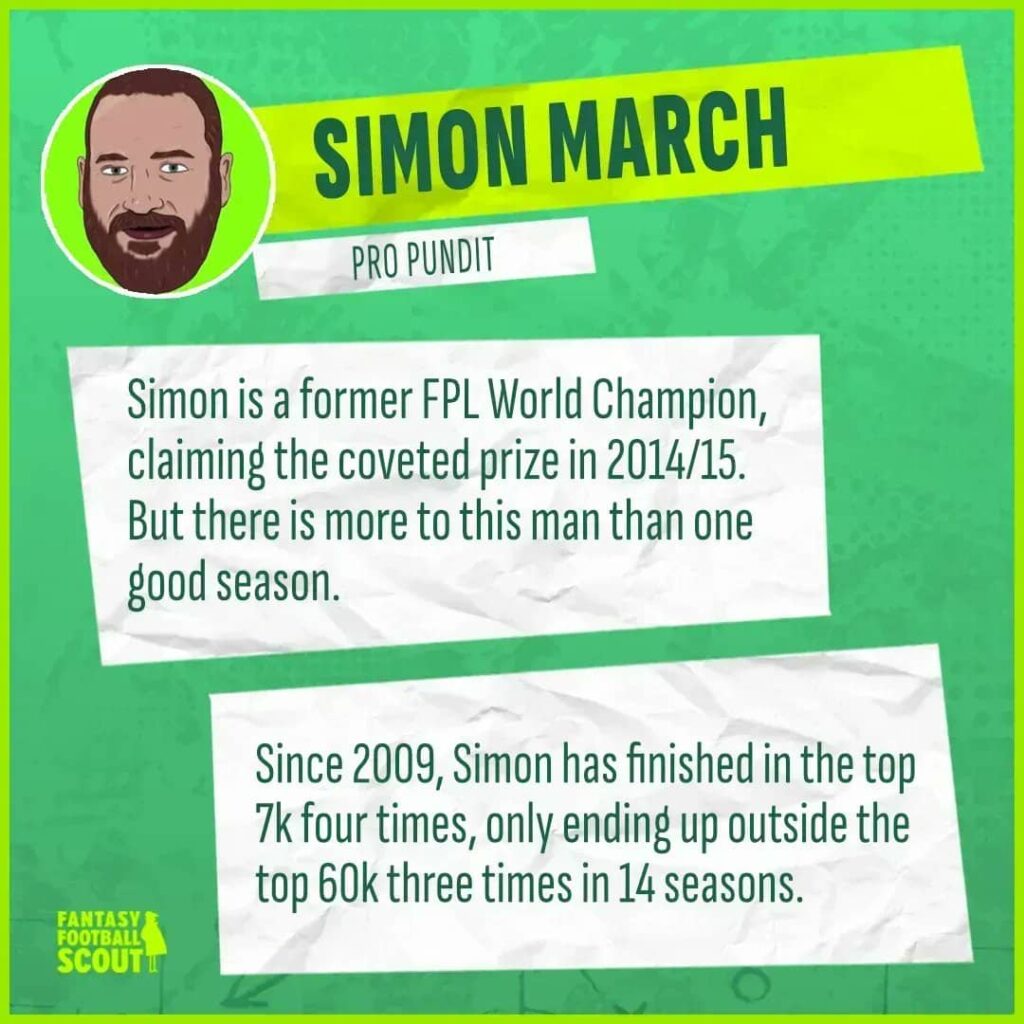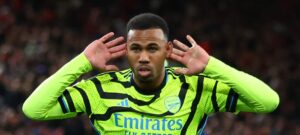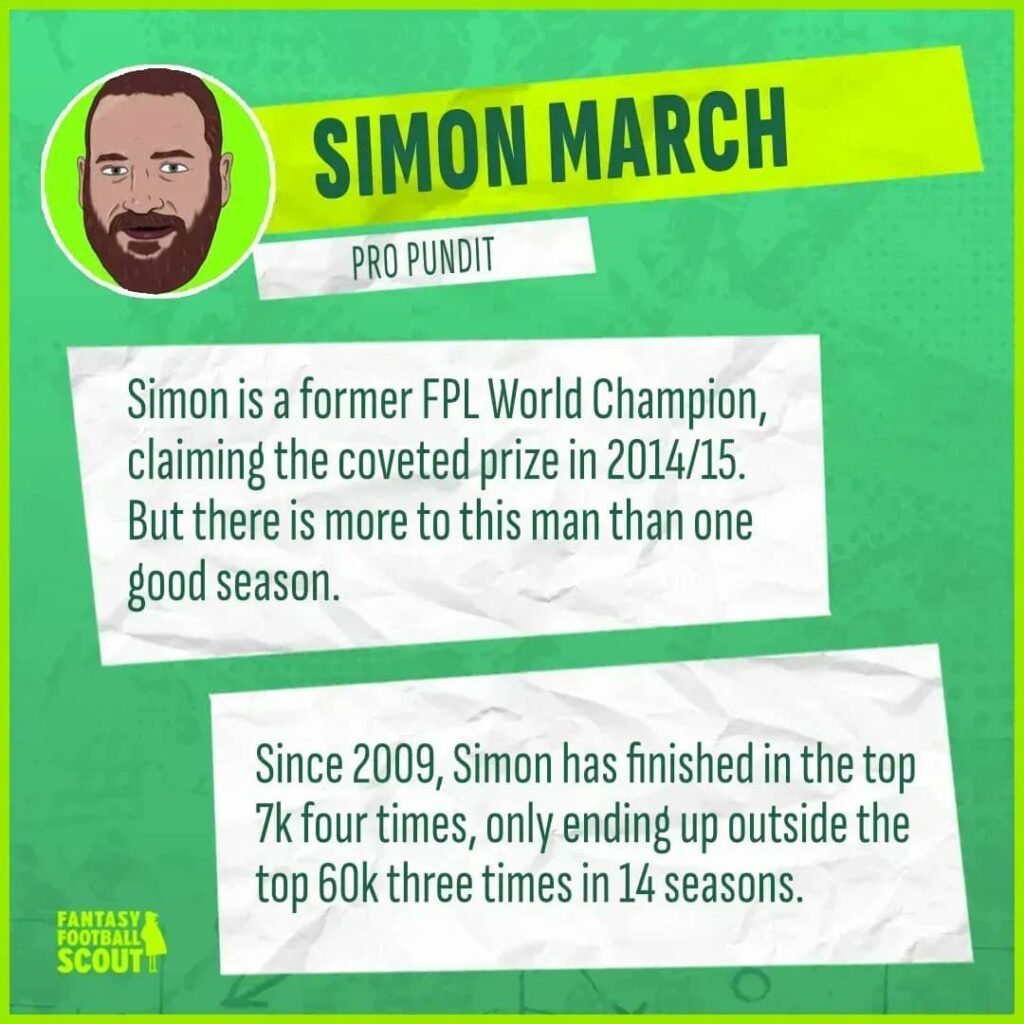Our team of Hall of Famers and guest writers are offering regular contributions throughout the 2023/24 Fantasy Premier League (FPL) campaign. Here, former champion Simon March looks back on some lessons from the season just gone.

The end of an FPL season always brings with it a mixture of emotions. The final Gameweek often feels like the last day or term and the last day of summer all rolled into one. We could all probably use a break at this point, but I’m sure we’ll also miss this game when it’s gone.
At the time of writing, I’m around the 2.5k mark in the overall rankings. While I may still harbour unlikely ambitions of a three-figure rank, had you offered me this position at the beginning of the season, you would likely be missing a hand right now.
However, and at the risk of inducing some eye rolls, I’d argue that a good FPL season isn’t defined simply by your rank. Instead, it is also one where you’ve learned something useful that you can bring into the next one.
So, with that in mind, here is what I’ll be taking with me from this season into the next.
It’s not just talent spotting, it’s also talent management

What stood out most to me in a season where there were seemingly so many good options available was the importance of not just spotting talent among FPL ‘assets’ but also of properly categorising them within our squads. Players can tick all sorts of boxes yet still so much depends on how you utilise them.
For me, a good FPL asset falls into one of three categories, each with its own requirements. This categorisation affects both how you assess player potential and the optimum ways in which to manage them.
THE LONG-TERM VALUE HOLDS
Firstly, there are the good-value, consistent performers whom we endeavour to identify early on. Then, ideally, we will hold on to them for as long as possible. These players form the spine of our squads. They are not necessarily regular captaincy options but they are nailed on, tend to be available and can be relied upon to deliver consistent returns largely irrespective of fixtures.
In my team this season, these included Ollie Watkins (£8.9m), Gabriel Magalhaes (£5.4m), Cole Palmer (£6.3m) and Dominic Solanke (£7.0m).
SHORT-TERM OPPORTUNITIES
Forming the second category are the short-term opportunity players who perhaps aren’t available or consistent enough for us to back for the entire season. However, we can switch them in and out to take advantage of good fixtures or an anticipated run of form. The better we manage the first category, the more scope we have to maximise the value of this second, more dynamic category, through aggressive use of our transfers.
Again, for my team this season, this category has included the likes of Pascal Groß (£6.1m), Nicolas Jackson (£7.0m), James Maddison (£7.8m) and Bryan Mbeumo (£6.8m).
I do believe that a significant part of how successful we are in an FPL season depends on how well we manage these first two categories. However, there is a third category, and the way in which we approach this group tends to not only disproportionately influence our FPL ranks but, arguably, also goes a long way to defining our core identity as Fantasy managers.
THE BIG GUNS
This final category is the high effective ownership (EO), often premium, usually explosive, typically popular captaincy option bracket of FPL asset. These are players with the potential to really hurt you if you don’t own them or, indeed, if you don’t captain them in the right moments.
This category has, this season, largely been dominated by just two players, Erling Haaland (£14.2m) and Mohamed Salah (£13.4m). We can also maybe count Son Heung-min (£10.0m) and Bukayo Saka (£8.9m) as key assets within this bracket. You could also argue that, albeit at a budget price, Palmer elbowed his way into this category, particularly in the second half of the season.
Judo and bomb-disposal

Some FPL managers look at these sort of high EO players and they see an opportunity. Like a judoka using momentum against their opponents, they look for a situation where everyone is going one way, and they gain their edge by subverting the trend and adroitly moving in the other direction. It takes instinct, timing, guts and, of course, some luck, but I’ve seen enough FPL managers successfully pull it off now to be convinced that there is most definitely an art to it, too.
I’ve always been a little envious of these sorts of managers because, when I look at high EO players, I tend to see a bomb that needs defusing. I don’t generally bet against the likes of Erling Haaland nor do I rely on them to gain rank. Any notable advantage that I accrue comes incrementally from the first two categories that I’ve described. For the most part, I just aim to try and limit the damage that this third category can cause to my rank. My past experience of betting against them has been, let’s just say, ‘sub-optimal’.
Nobody gets 37 green arrows in an FPL season so, sometimes, it’s about minimising the size of the red ones. However, I can’t help but think that, whatever you do with the first two categories of player, how you handle this third group will ultimately define your season.
Looking ahead

With this in mind, while I can maybe take a bit of pride in my rank this season, I need to also be conscious that every season is different. The unique dynamics that have defined this season, most notably the narrow convergence around captaincy options and the budgetary abundance resulting from kind pricing and the high volume of low-cost options, have probably suited my preferred style of play. This has contributed to my rank.
This might not be the case next season and, if I want to maintain this momentum, I may need to give some thought as to how I can add greater range to my management style. In other words, I may need to get better at taking those big risks, not just neutralising them.
Conversely, if you are the type of manager who likes to move as a contrarian, take big risks and chase heavy rank swings, it’s very possible that next season will suit you a lot better than this one might have.
Maybe it’s that promise of a fresh start and the opportunity to redefine or reinvent ourselves that keeps us coming back to this often cruel but ever-compelling game. Wherever we end up this time around, we’ll all soon find ourselves back, starting again next season. Yet, as Greek philosopher and keen FPL manager Heraclitus once remarked: “No man ever steps in the same river twice, for it’s not the same river and he’s not the same man”.
We now have a few months to rest, reflect and perhaps even reimagine ourselves as FPL managers. Then, before we know it, we’ll begin it all again.
A quick thank you
Before I go, I’d like to take this opportunity to thank Fantasy Football Scout for allowing me to contribute to their editorial content again this season. This was my ninth year as a Scout writer and, as a fan of the site for even longer, it’s always been a huge honour to have my words appear on their pages.
Special thanks to Scout editor Neale who, I can assure you, delivers to you something infinitely more readable than he receives from me. And, of course, a huge thank you to those of you who read and comment on these articles. We often go to some weird places together and I’m never quite sure how any of it will be received, so it means a great deal to know that people enjoy them.
Good luck with the final Gameweek and I hope you enjoy the break.

